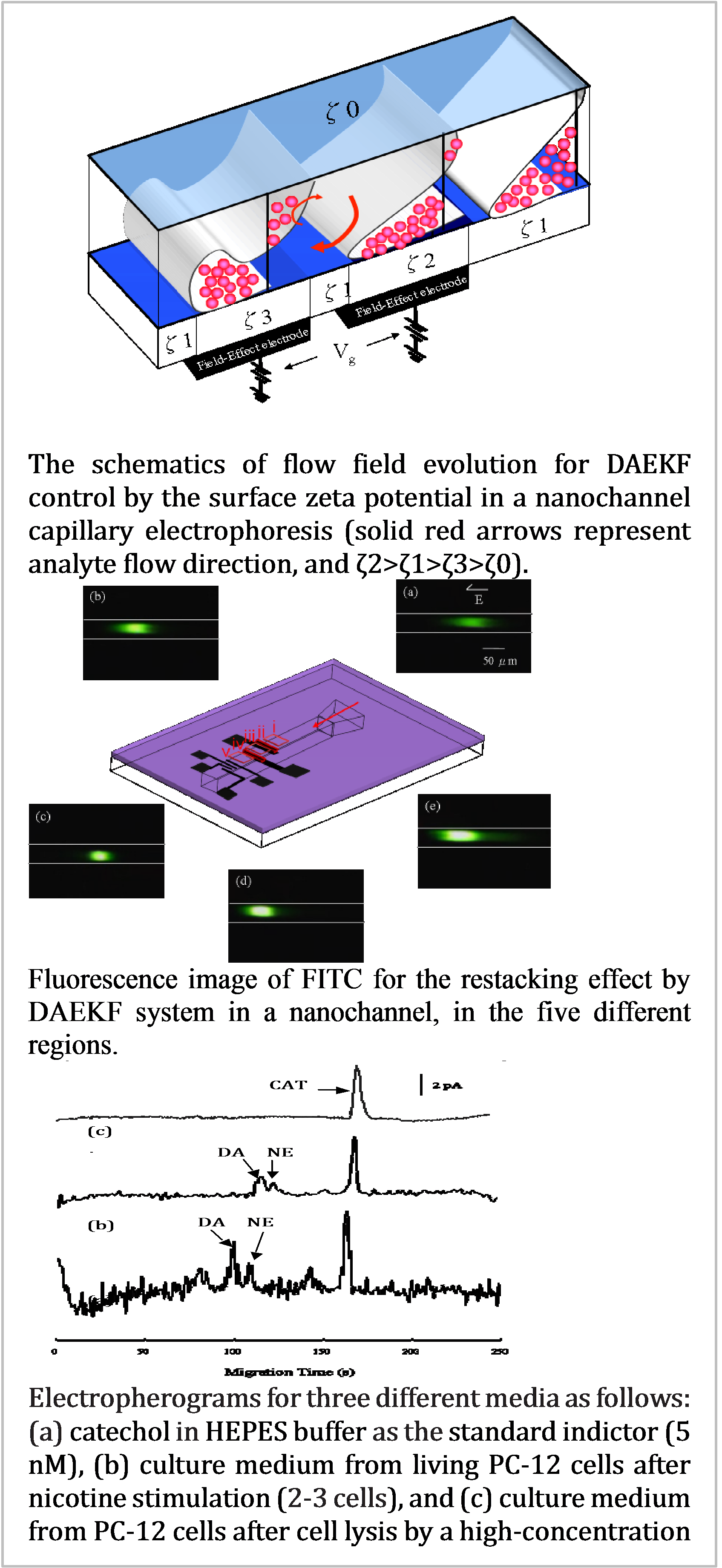Single cell diagnosis
NanoCEEC Chip Towards The Analysis of Living Single Cell Releasing (Biosen. Bioelec. 2013, Interface Focus, 2011, Electrophoresis 2009)

A novel methodology was developed to demonstrate the detection possibility of zeptomole level neurotransmitters released from living single cells. By employing a dual-asymmetry electrokinetic flow (DAEKF) technique for the sample preconcentration incorporated with gold electrodes of potentiostatic control of surface charge density for direct capture single cells on desired electrodes and integrated into a nano-capillary electrophoresis electrochemical (NanoCEEC) chip. This micro/nano-fluidic single cell analysis chip consists of a polydimethylsiloxane (PDMS) microchannel for cell sampling and biomolecules separation and silicon dioxide nanochannel deposited glass substrate for sample preconcentration and amperometric detection, all the processes were completed in less 15 min. The range of operation voltage is from 0.1 V to 1.5 V and the scan frequency is from 1 kHz to 100 kHz for PC-12 cells capt ure. Single cell capture efficiency is optimized by varying the duration of field application. DAEKF technique was applied to a PDMS/Glass CEEC nanochannel for the analysis of catecholamines. The detection limit can detect ~30-75 zeptomole dopamine or norepinephrine released from couples living single cells. A detection limit at the zeptomole level for dopamine can be obtained in this device, which is close to the level released by a single neuron cell in vitro.